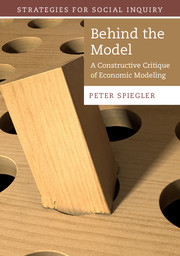Introduction
Published online by Cambridge University Press: 05 December 2015
Summary
On December 5, 1871, John Stuart Mill wrote to his friend and disciple John Elliot Cairnes expressing dismay at the work of William Stanley Jevons, one of the pioneers of the new abstract mathematical style in economics. Jevons had “a mania for encumbering questions with useless complications,” Mill wrote, “with a notation implying the existence of greater precision in the data than the questions admit of” (Mill 1972).
At the time of writing, Mill had not yet read Jevons' recently published Theory of Political Economy, but if he had, he would have found no reason to change his view. Jevons, for his part, was equally critical of Mill's work – and used remarkably similar language to make his complaint. According to Jevons, it was Mill's economic doctrines – and those of the then-dominant British Classical School more generally – that were unnecessarily complicated, because they were based on “mazy and preposterous assumptions” about the basic concepts of political economy (Jevons 1965: xliv).
What Mill and other classical political economists failed to see, Jevons argued, was that despite the apparent complexity of human social activity there was a fundamental simplicity and unity at its core. Standard economic notions such as utility, wealth, value, commodity, labor, land, and capital all reflected a single underlying theme: the basic human tendency to “satisfy our wants to the utmost with the least effort – to procure the greatest amount of what is desirable at the expense of the least that is undesirable – in other words, to maximise pleasure” (Jevons 1965: 37). This tendency manifested itself in human behavior in a manner that was uniform across people, quantitatively (Jevons thought cardinally) measurable, and separable from influences that were more context-dependent, such as morality or culture. Recognizing this, Jevons argued, would allow many of the issues that had troubled classical political economists to be bracketed, enabling the articulation of a precise “mechanics of utility and self-interest” on the model of physical mechanics (Jevons 1965: 21, emphasis original).
According to Jevons, the analogy with physical mechanics ran deep. The “laws and relations” governing utility mechanics had to be “mathematical in nature,” because they “dealt with quantities,” i.e. “things … capable of being greater or less” (Jevons 1965: 3, emphasis original). These laws could also be isolated from potentially disturbing factors, not only conceptually but also empirically.
- Type
- Chapter
- Information
- Behind the ModelA Constructive Critique of Economic Modeling, pp. 1 - 10Publisher: Cambridge University PressPrint publication year: 2015

